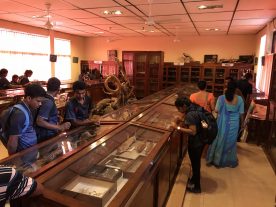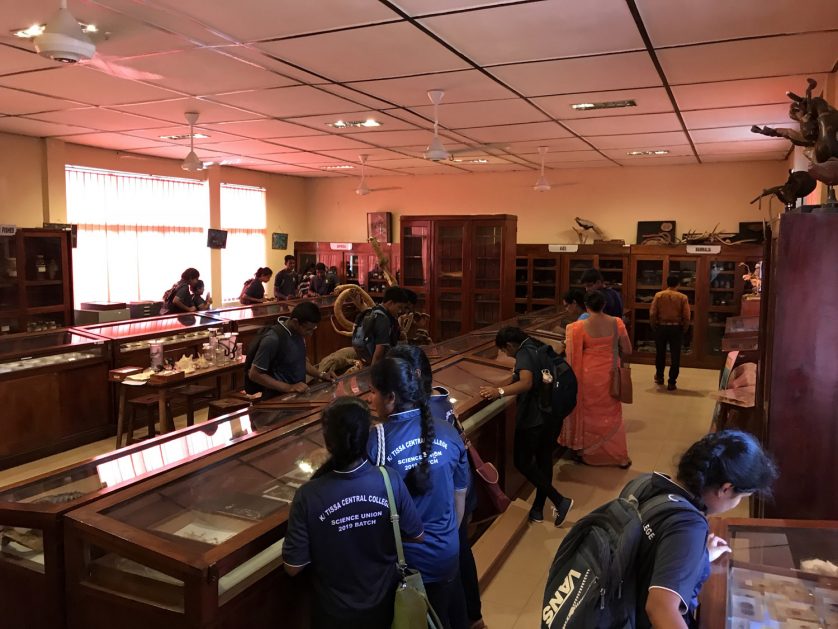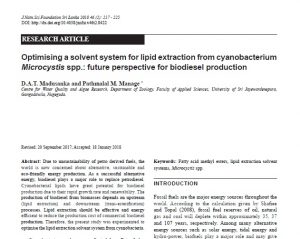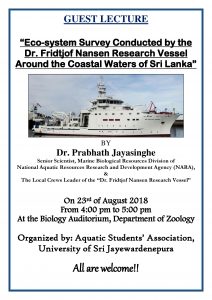

Author (SJP): Prof. Dharshani Mahaulpatha
Journal: Ecology and Evolution
A large body of evidence indicates that evolutionary innovations of novel organs have facilitated the subsequent diversification of species. Investigation of the evolutionary history of such organs should provide important clues for understanding the basis for species diversification.
Read more >>
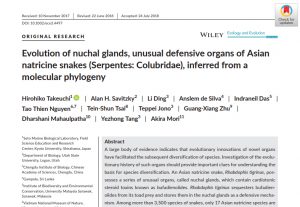
Students and staff members of science union, 2019 batch of Tissa central college, Kaluthara visited the museum of the department of Zoology on 5th July, 2018. Interactive session and discussion with students and teachers were conducted by the curator Mr. R. Petiyagoda.
The Museum is open to University students, Schools and general public. Anyone can make a reservation by contacting the head of the department (pathmalal@sjp.ac.lk) or Mr. Ravindra Pethiyagoda, Museum Curator (071 443 9367).
Author: D.A.T. Madusanka and Pathmalal M Manage
Journal: Journal of National Science Foundation
Due to unsustainability of petro derived fuels, the world is now concerned about alternative, sustainable and eco-friendly energy production. As a successful alternative energy, biodiesel plays a major role to replace petrodiesel.
Read more >>




